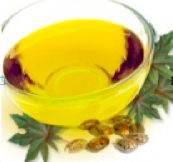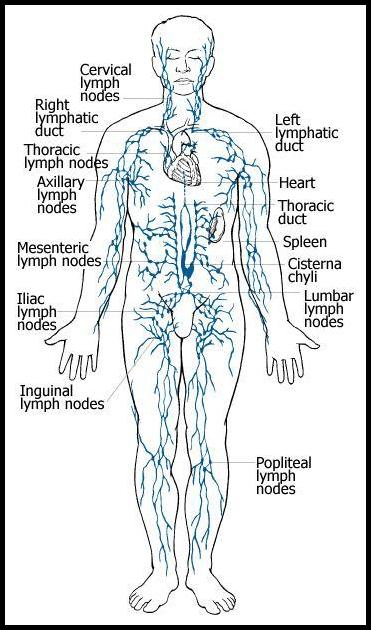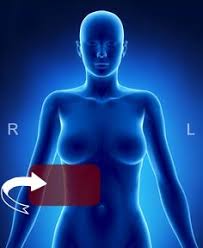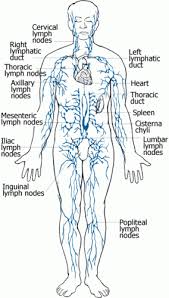Castor Oil
The History and Philosophy of Castor Oil
Although we mainly know it as one of Edgar Cayce’s most famous remedies, castor oil has a long history of traditional medical use dating back to ancient Egypt. Centuries ago the castor bean plant was referred to as the “Palma Christi.” It was called this because the shape of the plant’s leaves was thought to resemble the palm of Christ. Knowing the healing power of this plant, the name may be one of the most accurate descriptions ever.
The castor bean plant is actually native to India, where it is called “Erand.” There it was  used extensively for all types of gastrointestinal problems like constipation, dysentery and inflammatory bowel disease. It was also used to treat bladder and vaginal infections and asthma. The seed kernels or hulls (without the actual seed) could be boiled in milk and water and taken internally to relieve arthritis and lower back pain accompanied by sciatica.
used extensively for all types of gastrointestinal problems like constipation, dysentery and inflammatory bowel disease. It was also used to treat bladder and vaginal infections and asthma. The seed kernels or hulls (without the actual seed) could be boiled in milk and water and taken internally to relieve arthritis and lower back pain accompanied by sciatica.
In Russia the oil is known as “Kastorka.” The stem of the plant is used in the textile industry. The extracted oil has a very consistent viscosity and won’t freeze even in Russia’s severe climate. This makes it ideal lubricating oil in industrial equipment. Medicinally, the oil is added to products to restore hair (one part oil to 10 parts of grain alcohol), treat constipation, skin ulcers, some infectious gynecological conditions and eye irritations.
Nursing mothers in the Canary Islands used poultices made from the leaves of the castor bean. They applied the poultice to their breasts to increase milk secretion and relieve inflammation and milk stagnation in the mammary glands. Applying the poultice to the abdominal area promoted normal menstruation.
Much of the current use of castor oil packs, in the U.S. anyway, can be attributed to the late healing psychic, Edgar Cayce. Time after time he recommended their use. Based on his reports, I began using them in my practice over 30years ago. But even though the results can be remarkable, this technique is still practically unknown and shunned by most health care professionals today. This is probably due to two reasons. First, it’s just too simple. It’s hard for most people to imagine that something as simple as castor oil packs could have a profound effect on any health problem. Secondly, in our present health care system, positive results alone do not constitute the critical factor in determining whether a treatment will be accepted by the medical establishment. Everybody now seems to be more concerned about how something is supposed to work, than whether it actually works at all.
Recent research data presented by longtime follower of Edgar Cayce, Dr. William McGarey of Phoenix, Arizona, might help shed some light on how castor oil works.
Castor oil is a triglyceride of fatty acids. Almost 90 percent of its fatty acid content consists of ricinoleic acid. Ricinoleic acid is not found in any other substance except castor oil. Such a high concentration of this unusual, unsaturated fatty acid is thought to be responsible for castor oil’s remarkable healing abilities.
Ricinoleic acid has been shown to be effective in preventing the growth of numerous species of viruses, bacteria, yeasts and molds. (J Am Oil Chem. Soc 61; 37.323-325.) This would explain the high degree of success in the topical use of the oil for treating such ailments as ringworm, keratosis (non-cancerous, wart-like skin growths), skin inflammation, abrasions, fungal-infected finger- and toenails, acne and chronic pruritus (itching). Generally, for these conditions the area involved is simply wrapped in cloth soaked with castor oil each night, or if the area is small enough, a castor oil soaked Band-Aid can be used. (For persistent infections and those finger- and toenails that have discolored and hardened, a good 10 to 20 minute soak in Epsom salts, prior to applying the castor oil, usually speeds up the healing process.)
Castor oil’s antimicrobial activity, while very impressive, comprises only a small part of the story concerning this mysterious oil. While castor oil has been thoroughly investigated for its industrial uses, only a minimal amount of research effort has been directed toward its medicinal benefits.
Many individuals suffering from auto-immune disorders such as AIDS, Rheumatoid Arthritis, Lupus, Scleroderma, Auto-Immune Thyroiditis etc. have been able to increase their T-cell counts; balance their B-cell counts; and clear up many of their problems by using the techniques described. Others’ have found it useful in eliminating chronic problems with epilepsy, hyperactivity, liver and gallbladder diseases and chronic fluid retention.
McGarey reported when used properly, castor oil packs improve the function of the thymus gland and other areas of the immune system. More specifically, he found in two separate studies that patients using abdominal castor oil packs had significant increases in the production of lymphocytes compared to increases among those using placebo packs.
Lymphocytes are the disease-fighting cells of your immune system. They are produced and housed mainly in your lymphatic tissue. This includes the thymus gland, the spleen, the lymph nodes and the lymphatic tissue that lines the small intestine (called Peyers patches, or more commonly, aggregated lymphatic follicles). Strangely, other than knowing it produces the body’s white blood cells, most doctors are not very knowledgeable about the lymphatic system.
Castor Oil and the Lymphatic System
 The lymphatic system is an amazingly complex structure. It works hand in hand with both the blood circulatory system and the digestive system.
The lymphatic system is an amazingly complex structure. It works hand in hand with both the blood circulatory system and the digestive system.
In the circulatory system newly oxygenated blood from the lungs moves from the heart along smaller and smaller arteries until it reaches the smallest vessels called capillaries. It is in these microscopic tubules that the blood exchanges oxygen and nutrients for cellular waste products with surrounding body cells. The capillaries then gradually become larger and form veins through which the un-oxygenated, waste-carrying blood returns back to the lungs and then to the heart to be re-circulated time and
time again.
Much of the fluid accompanying the blood and large protein molecules leaks from these capillaries. Additional fluids and waste products are expelled from every cell in the body. These fluids accumulate in the small spaces between the cells. If all of this material weren’t somehow removed we would begin to swell like a toad and die within a matter of 24 hours. Fortunately, we have a completely separate circulation system, called the lymphatic system that is able to absorb and remove these fluids, proteins and waste materials. With the exception of the brain, where these proteins and fluids flow directly into the fluid that surrounds them, the extensive lymphatic network has hundreds of miles of tubules that cover the entire body. Through these tubules all of this material is returned to the blood so it can be utilized or eliminated from the body. (There is no pathway, other than the lymphatic system, that excess protein molecules can use to return to the circulatory system.)
Also, along these lymphatic tubules you’ll find bulb-shaped masses called lymph nodes, which act as filters and produce antibodies when foreign proteins are encountered. Surely you’ve experienced the tenderness and swelling of an inflamed lymph node at one time or another. It is usually a result of antibodies fighting an infection either in the node itself or somewhere in the draining area of that particular lymph chain.
In addition to returning leaking fluid from the circulation system and creating antibodies for the immune system, the lymphatic system also performs another very important function. Clumps of lymphatic tissue, called Peyers patches, are spread throughout the small intestine. Unlike other nutrients, fat molecules are generally too large to be absorbed directly from the intestine. Instead, they are absorbed by these patches and transported along the lymphatic system and then released into the blood stream where they can be carried throughout the body. Between 80 to 90 percent of all the fat absorbed from the gut requires the help of the lymphatic system.
When it comes to treating the majority of health problems, the status of your lymphatic system is rarely given any consideration whatsoever. Medical students are taught that a failure of the lymphatic system is obvious to detect because it is accompanied by “pitting” edema (the accumulation of fluid in the tissues, i.e. swelling, usually in the feet, ankles or hands). The test for “pitting” edema is rather simple. A finger is pressed into the skin at the area of the swelling and then quickly removed. The skin stays depressed, forming a small “pit”, which remains until the fluid outside the cells has time to return to the area (this can take anywhere from 5 to 30 seconds). Unfortunately, research studies have shown that “pitting” edema and other signs of fluid retention can’t be observed until fluid levels outside the cells reach 30 percent above normal. In other words, you can have a serious lymphatic drainage problem long before it can be detected.
Several problems occur when the lymph drainage slows and fluids begin to accumulate around the cells. First, the individual cells are forced further and further away from the capillaries. The amount of oxygen and nourishment they receive is decreased. Under exertion or stress some cells may die. Additionally, cells are forced to survive in their own waste and toxic by-products. This situation can eventually lead to the degeneration and destruction of organs. For example, poor lymphatic drainage of the heart can lead to tissue damage and even heart failure. Similar problems occur in the liver, the kidneys and other organs.
Fluid accumulation outside the cells also stretches the tissue in the area. The more it stretches and the longer it remains that way, the harder it becomes to correct the problem.
Regardless of the health problem, efforts should be taken to improve the function of the lymphatic system in every health problem. At the imperil of the patient, most doctors generally assume the lymphatic system is working adequately when in fact it is not! Research has shown that as we age certain organs begin to degenerate. The thymus gland is a key component of the immune system. It is initially responsible for the proper development of the lymphatic system and is practically absent in older individuals.
Peyers patches, those clumps of lymphatic tissue found in the small intestine, begin to get smaller with age and are often destroyed by certain diseases like typhoid fever. (Cayce felt that the overall health and well-being of an individual was directly related to the health of these Peyers patches. He stated on several occasions, that a certain compound formed in these patches was necessary for maintaining the integrity of the nervous system. He may very well be correct. To this day, we still don’t totally understand the functions and importance of either the thymus gland or Peyers patches.)
Efforts should be taken to improve the function of the lymphatic system in every health problem. This applies to all immune system disorders such as AIDS, as well as heart disease, hemorrhoids and everything in between. No drug exists that has the ability to improve lymphatic flow; however, the job can easily be handled through the topical application of castor oil.
When castor oil is absorbed through the skin, several extraordinary events take place.
- The lymphocyte count of the blood increases. This is a result of a positive influence on the thymus gland and/or lymphatic tissue.
- The flow of lymph increases throughout the body. This speeds up the removal of toxins surrounding the cells and reduces the size of swollen lymph nodes. The end result is a general overall improvement in organ function with a lessening of fatigue and depression.
- As toxicity is reduced, the pH of the saliva becomes less acidic, indicating improved health.
- The Peyers patches in the small intestine become more efficient in their absorption of fatty acids, which are essential for the formation of hormones and other components necessary for growth and repair.
Lymphatic Congestion
Obviously, conditions known to be related to poor drainage of the lymphatic system will tend to benefit from this type of therapy. These would include complaints such as:
- Chronic Fluid Retention
- Swollen joints and pain
- Arthritis
- Upper respiratory infections involving the sinuses, tonsils and inner ear
- Colon problems like Crohns disease or colitis
- Gallbladder disease
- Boils
- Liver cirrhosis, hepatitis, enlargement or congestion
- Menstrual-related congestion
- Appendicitis
- Hyperactivity
- Constipation, bowel impaction or adhesions
- Swollen lymph nodes
- Bladder and vaginal infections
- Polycystic Ovary Syndrome (POS)
Common Methods of Using Castor Oil
In the past, the most common way to use castor oil was to take it orally to correct constipation and promote “purging” of the system. Due to the aggressive mode of action and the availability of other products, castor oil is no longer recommended for this purpose.
 Today, the most famous use of Castor Oil is to make a pack and place it over the liver. This is done usually at night and the pack remains over the liver for 20-30 minutes.
Today, the most famous use of Castor Oil is to make a pack and place it over the liver. This is done usually at night and the pack remains over the liver for 20-30 minutes.
Rubbed or Massaged Directly Into the Skin:
Due to the many effects of its fatty acid component, ricinoleic acid, the use of castor oil can be used topically to treat a wide variety of health complaints. Oftentimes there is no need for castor oil packs; amazing results can be obtained by simply applying it directly to the skin. It can also be used as massage oil which seems to be especially effective when applied along the spinal column. If the oil is massaged into the body, the direction of the massage should always follow the same path as the underlying Lymphatic drainage system. The diagram below shows the proper direction to massage the oil and further facilitate lymphatic drainage.
The following is a short list of some of the more common ailments it can remedy:
Conditions Responding to Topical Application:
- Skin Keratosis
- Ringworm
- Fungal and bacterial infections
- Wounds
- Abdominal stretch marks (prevention)
- Bursitis
- Sebaceous cysts
- Warts
- Senile lentigo (“liver” or “aging” spots)
- Muscle strains
- Ligament sprain
- Itching
Castor Oil Packs:
While all of these uses of castor oil very interesting, the most exciting use deals with ways to increase topical absorption through the use of castor oil packs or poultices. Packs are an economical and efficient method of absorbing the ricinoleic acid and other healing components of castor oil directly into body tissues.
A castor oil pack is placed on the skin to increase circulation and to promote elimination and healing of the tissues and organs underneath the skin. It is used to stimulate the liver, relieve pain, increase lymphatic circulation, reduce inflammation, and improve digestion.
Conditions Responding to Castor Oil Packs:
Lymphatic Congestion

Lymph System
Obviously, conditions known to be related to poor drainage of the lymphatic system will tend to benefit from this type of therapy. These would include complaints such as:
- Chronic Fluid Retention
- Swollen joints and pain
- Arthritis
- Upper respiratory infections involving the sinuses, tonsils and inner ear
- Colon problems like Crohns disease or colitis
- Gallbladder disease
- Boils
- Liver cirrhosis, hepatitis, enlargement or congestion
- Menstrual-related congestion
- Appendicitis
- Hyperactivity
- Constipation, bowel impaction or adhesions
- Swollen lymph nodes
- Bladder and vaginal infections
- Polycystic Ovary Syndrome (POS)
Neurological Problems: Several Neurological problems have also been responsive to castor oil. These include:

- Shingles
- Parkinson’s Disease
- Multiple Sclerosis
- Migraine Headaches
- Cerebral Palsy
 AIDS:Conditions that stress or compromise the immune system will very often benefit from castor oil packs. Nowhere is this more obvious than with AIDS. I have talked with several AIDS patients who have added castor oil packs (usually for one hour a day) to their treatment regimen with very positive results. Within two weeks, it was not uncommon for them to see increases in their WBC counts (white blood cell counts), platelet counts, hematocrit readings and RBC counts (red blood cells).
AIDS:Conditions that stress or compromise the immune system will very often benefit from castor oil packs. Nowhere is this more obvious than with AIDS. I have talked with several AIDS patients who have added castor oil packs (usually for one hour a day) to their treatment regimen with very positive results. Within two weeks, it was not uncommon for them to see increases in their WBC counts (white blood cell counts), platelet counts, hematocrit readings and RBC counts (red blood cells).
Castor Oil Cocktail:
In addition to the castor oil packs many people with immune system compromise also drink a combination of olive oil and lemon juice to further stimulate lymphatic flow and liver activity. It can be made by blending the following:
1 clean whole lemon, (pulp, rind, seeds and all)
1 tablespoon of extra virgin olive oil
1 1/2 cups of distilled water
4 rounded tablespoons of frozen orange juice concentrate
The blended material is then strained through a wire strainer to remove the pulp, which is discarded. The remaining liquid is divided in four equal portions of approximately 1/4 cup each and a portion is consumed with each of the three daily meals and before bedtime.
In addition to stimulating lymphatic flow, the drink increases the flow of bile from the liver and gallbladder, which, in turn, enhances one’s ability to digest essential fatty acids through the Peers patches in the small intestine. It is not uncommon for AIDS patients to experience weight gain and a reversal of a long list of complaints often associated with fatty acid deficiencies.
Any oil that enters your body either orally or through the skin needs to be of the highest quality. Castor oil is no different.
This article is a compilation from an article written by Dr. David G. Williams — complementaryS — v6 n1, July 1995. It also contains information originated from Edgar Cayce, Dr. William Mc Garey, Harvey & Julia Grady and myself.
Castor Oil Packs Immunomodulation
Castor Oil Packs Instructions


 The lymphatic system is an amazingly complex structure. It works hand in hand with both the blood circulatory system and the digestive system.
The lymphatic system is an amazingly complex structure. It works hand in hand with both the blood circulatory system and the digestive system.